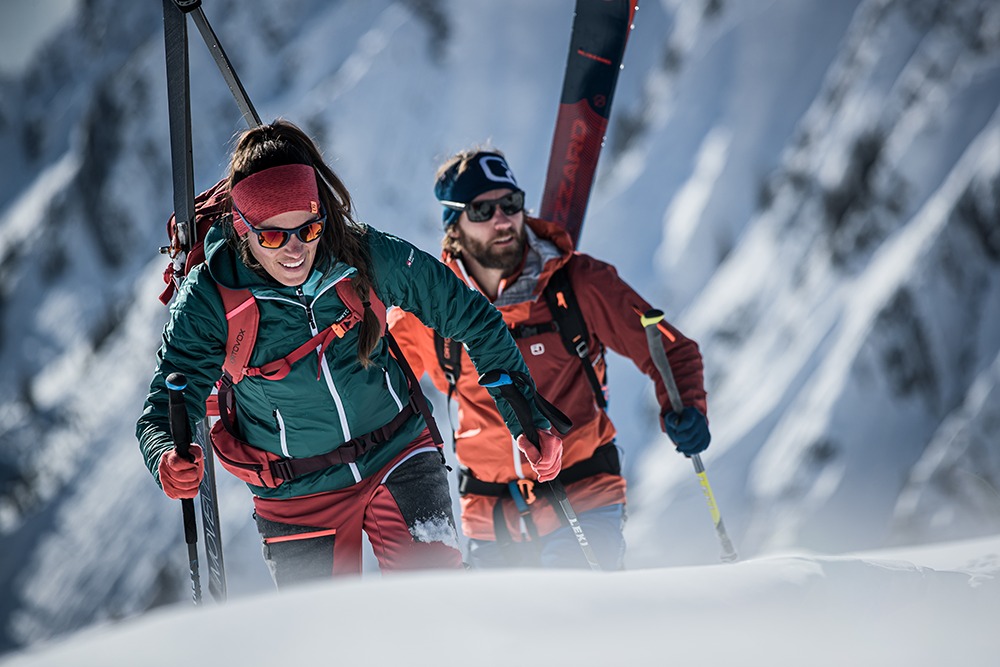photo by ORTOVOX
The human body is well made. When you exercise and your body temperature rises, sweat permeates your skin, and the heat of vaporization lowers your body temperature. In the summer, the sweating effect may be enough with "the wind feels good", but in the severe winter on the snowy mountains, it can be fatal. Therefore, clothing must be able to move and stop without sweating. Yes, this is where layering comes into play.
What exactly is layering?
Layering means "layering". It refers to adjusting your body temperature by taking off and putting on multiple layers of clothing in order to maintain your body temperature and avoid sweating.
In the summer, two or three pieces are enough, but in the winter, middle layers and insulation jackets are added, and the number of clothes increases, and the action becomes complicated.
When the amount of exercise is low, the need for layering diminishes, but when the amount of exercise increases, its importance, the functions required of the wear, and the action increase. The ideal layering is one that provides a good balance between the two conflicting functions of heat retention and breathability (moisture permeability).
Why do you need layering?
Needless to say, the principle of snow mountain layering is to warm your body. If you are in a state of stillness with zero exercise, all you have to do is put on clothes and hats to keep your body warm. However, when humans move their bodies, they emit heat and steam. I have to let it out of my clothes, which is proportional to the energy my body consumes. Yes, to keep you from sweating.
The important points in enjoying skiing and snowboarding in the snowy mountains are how to walk without sweating and how to deal with sweat. is. While listening to your body, you can layer and take off your clothes according to the situation. If the swing of the amount of exercise is large, the action of layering will also increase frequently, and it will be busy as it is. However, the sensible temperature and the amount of perspiration are different for each person. The key is to find your own layering technique through trial and error.
Snow mountain layering, its types and roles
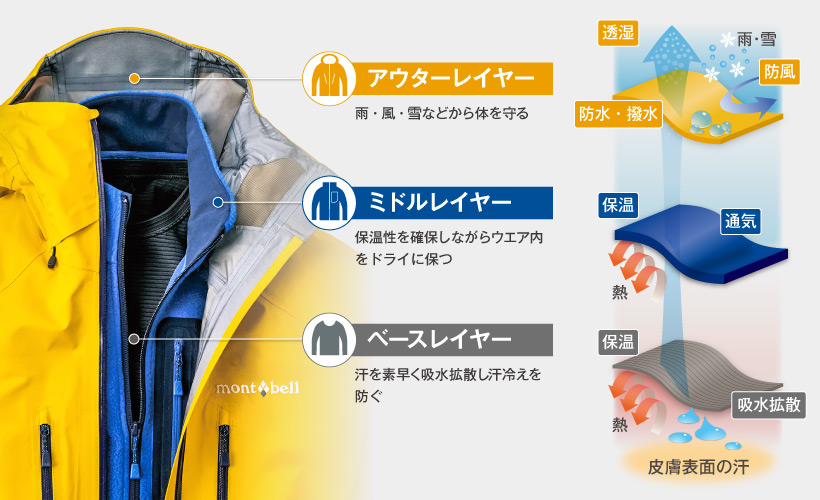
1. base layer
It is the thinnest wear that touches the skin. A wide variety of functions are required, such as heat retention, elasticity, quick drying, and deodorizing. There are almost two choices for the material, merino wool or chemical fiber, and recently hybrid models that combine the best of the two have appeared.
Merino wool is merino wool that is bred in Australia and New Zealand. It has high heat retention, is comfortable to the touch, and does not sweat cold. Furthermore, it is a natural material that suppresses the growth of bacteria that cause unpleasant odors. Among chemical fibers, the mainstream is polyester, which is quick-drying, durable, and highly stretchable. It absorbs sweat between the fibers, diffusing it and drying it, so it is often worn during periods of high sweating.
The most important function in the snowy mountains is how well it handles sweat. right. The most important thing to pay attention to is that the sweat is sucked up between the fibers, and the body temperature is not lost by the heat of vaporization. It is also important to dry the sweat as soon as possible, so cotton materials that do not dry easily are a no-go.
Recently, a new category called dry layer with high water repellency is also popular. This is worn under the base layer, and it works to quickly repel the sweat on the skin to the base layer and suppress the cold sweat. Innovative underwear that can be used for a wide range of activities, such as mountain climbing during the cold season. A model combining the dual structure of this dry layer and base layer has also appeared, and the base layer market is ambitious to prevent sweat chills.
◆ Example of 100% merino wool base layer
ORTOVOX | ROCK'N'WOOL LONG SLEEVE
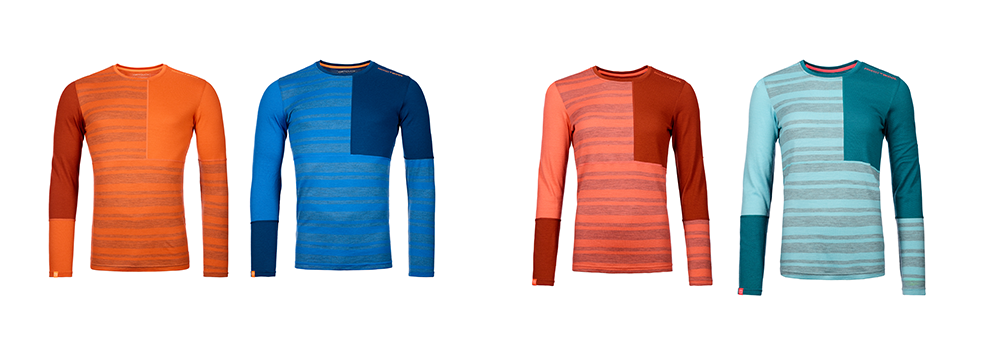
Made from 100% Tasmanian virgin merino wool, it feels great on the skin. Although it is inferior to synthetic fibers, it dries quickly and does not get stuffy. Because it is 100% wool, it is also a great point that it is very difficult to smell. Not only is it extremely warm and ideal for the winter season, but the material also has a high breathability, making it comfortable to wear in the summer. It is warm and comfortable enough to spend indoors in winter with just one top and bottom in everyday life.
◆ Example of hybrid base layer
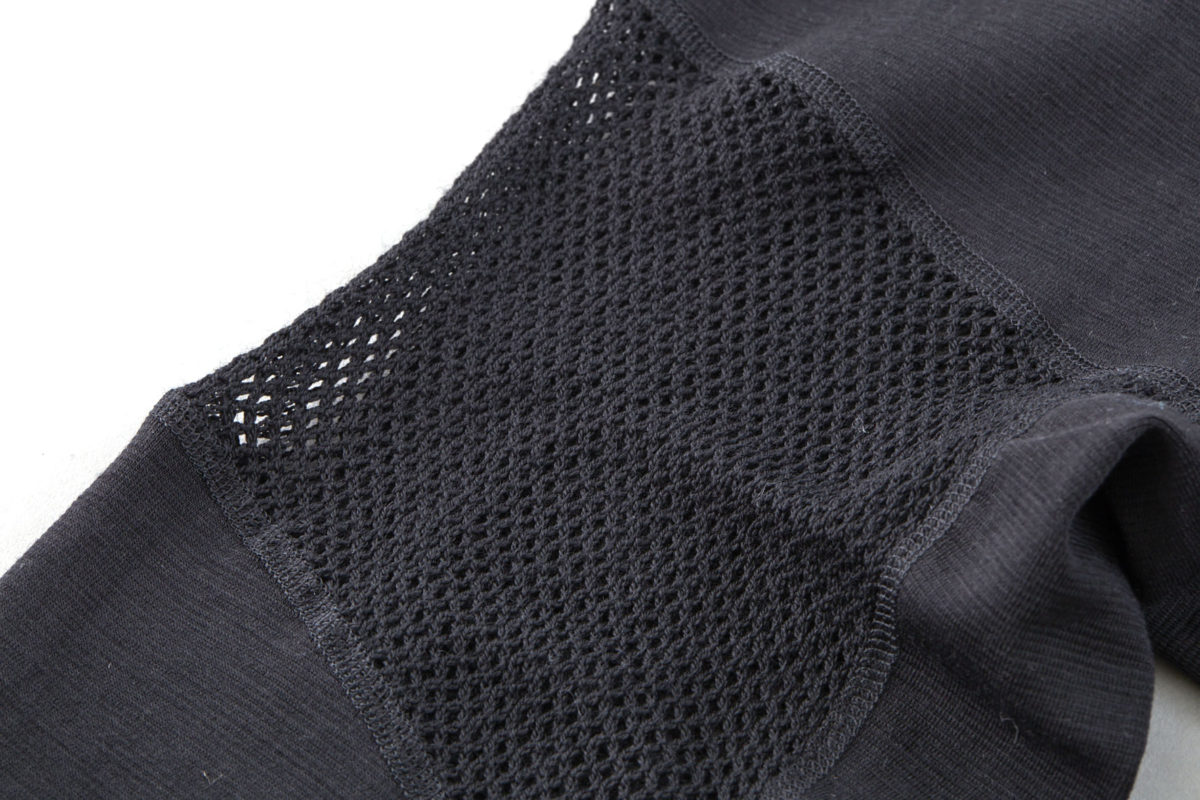
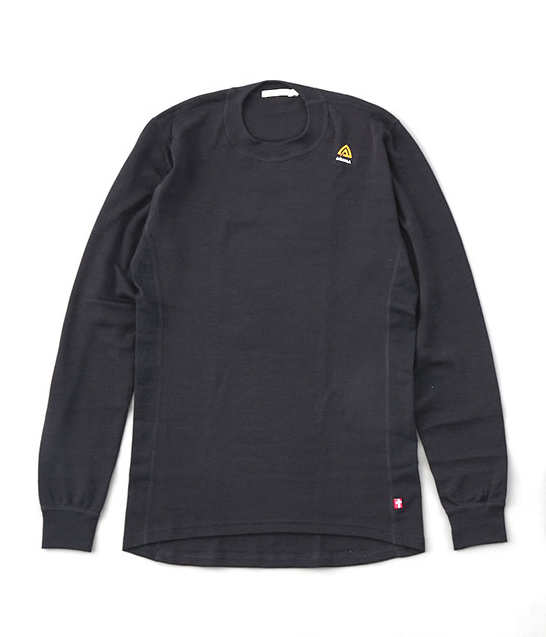
ACLIMA
WarmWool Crew Neck 12,100
yen
Sizes: XS to 3XL
Colors: 3 colors
ACLIMA's signboard model using high-quality merino wool that is considered in terms of the natural environment and breeding. 80% merino wool, 20% polyamide blend. It absorbs sweat and dries quickly, keeping your skin dry all the time.
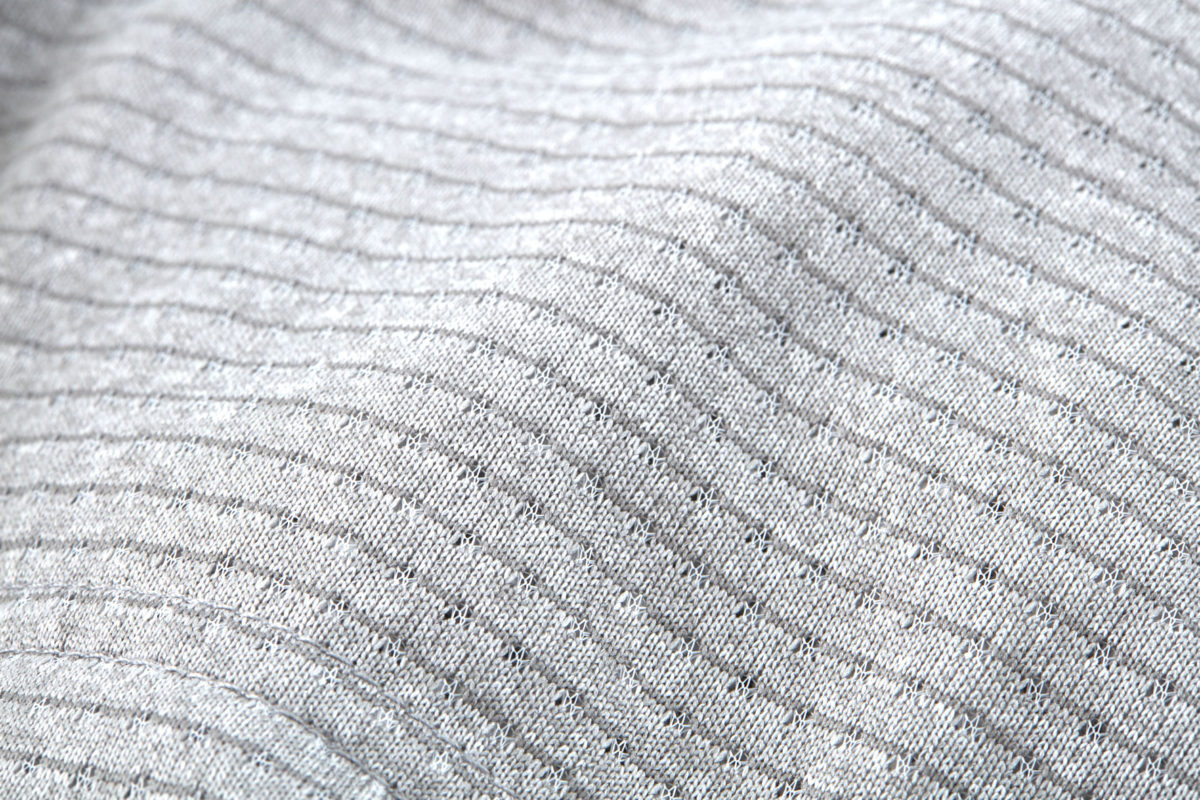

Millet Whole
GMT Waffle Wool HD M
16,500 yen
Sizes: XS/S-M/L
Colors: 3 colors
Hybrid base layer with synthetic fiber material using high quality merino wool at a rate of 73%. The light and warm three-dimensional waffle shape reduces stress on the skin and achieves a soft touch. It also has the effect of enhancing high breathability and quick drying.
2. mid layer
As the name suggests, it is an intermediate garment worn between the base layer and the outer shell. Heat retention and stretchability to ensure warm air, and moderate breathability to release stuffiness are required.
The most popular type is the fleece jacket. The fabric is made of brushed polyester that traps warm air, and has high heat retention. However, it has the weak point of allowing air to pass through and being bulky. There are also traditional wool sweaters and merino wool woven into a pile.
Also, recently, models using minimal synthetic cotton called active insulation are popular. Also known as dynamic thermal insulation, the amount of padding is minimized to prevent overheating during activity, and breathability is improved. When you are moving, the stuffiness is discharged like a pump with the movement, and when you are stagnant, it warms your body with moderate heat retention. Polartec's Alpha material and Primaloft's Gold Active are used for the batting.
◆ Fleece mid layer example
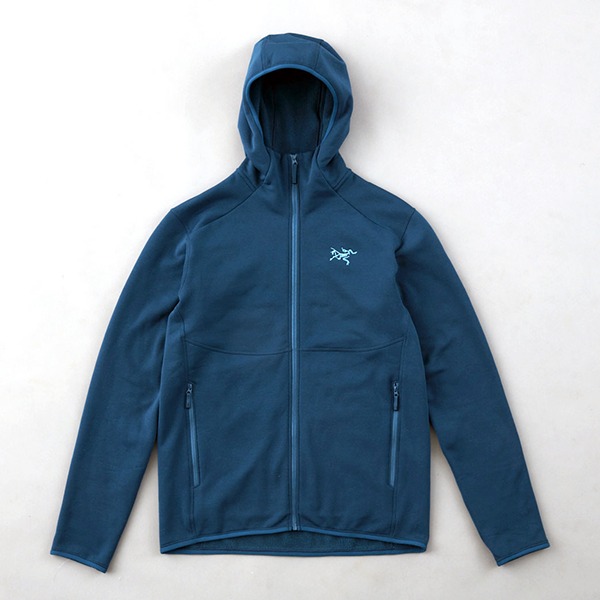
ARC'TERYX
Kyanite AR Hoodie
24,200 yen
Sizes: XS to XXL
Colors: 5 colors
Versatile fleece that is supple, light, and just the right amount of warmth. Because it uses a relatively thin fabric, it is easy to move even when layered, and the stuffiness is released smoothly.
◆ Examples of active insulation

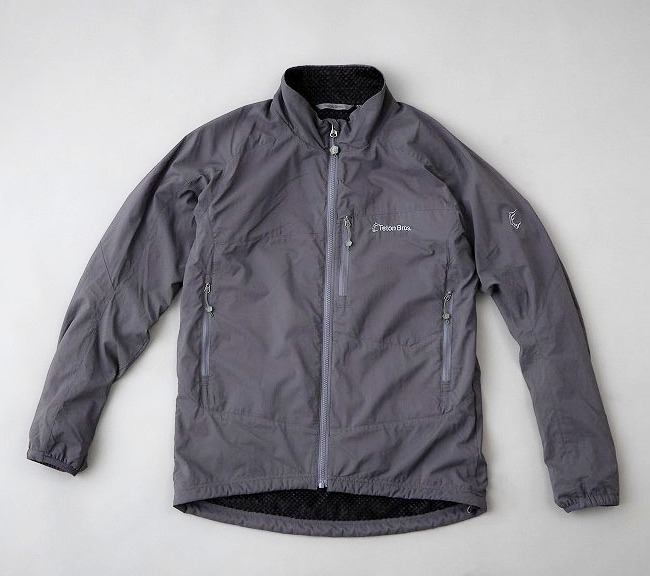
TETON BROS.
SUB JACKET
26,400 yen
Sizes: XS-XL
Colors: 6 colors
An active insulation jacket with a well-balanced combination of heat retention, breathability, and light weight. It keeps the inside of the clothes dry and prevents overheating even during high-intensity hikes.
THE NORTH FACE | VENTRIX SHIRT & HYBRID VENTRIX PANT
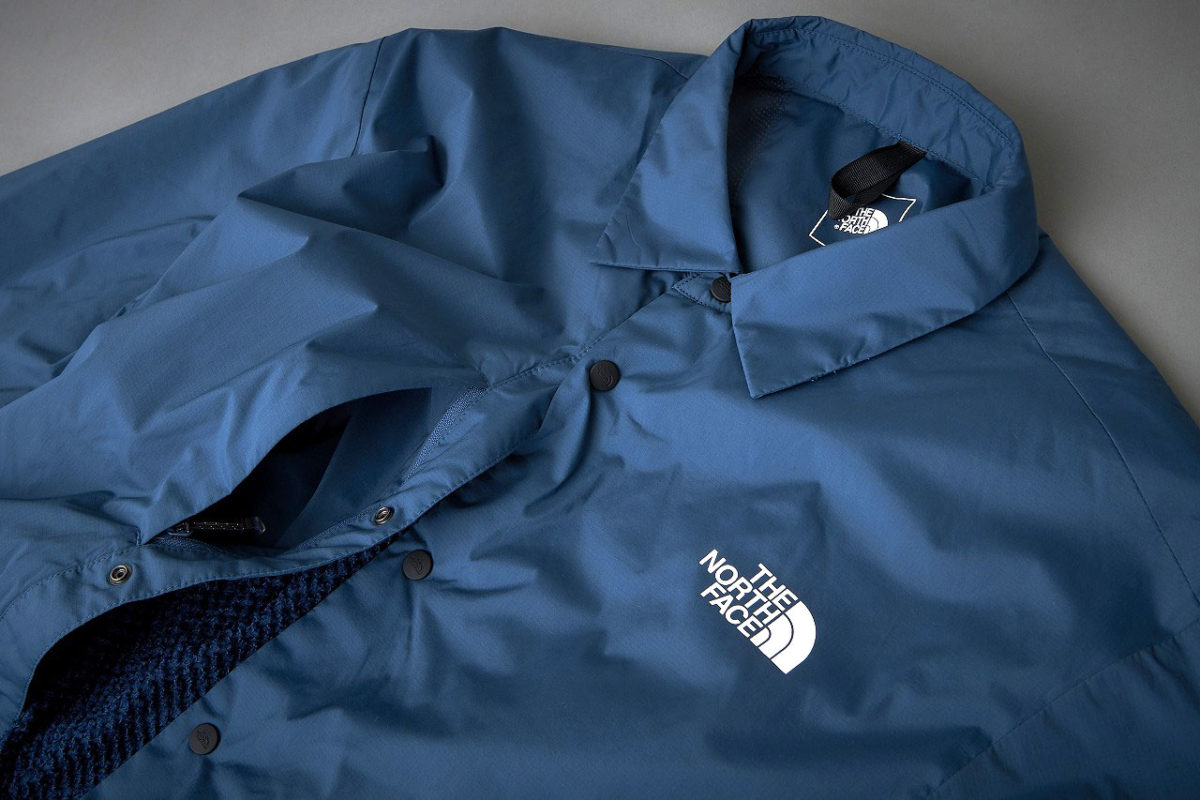
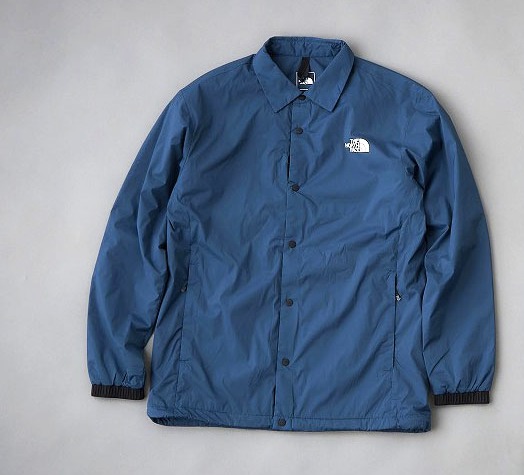
THE NORTH FACE
VENTRIX SHIRT
27,500 yen
Size: S to XL
Color: 2 colors
Active insulation series with well-balanced 4 functions: water repellency + breathability + heat retention + elasticity. Enclosed with synthetic fiber Ventrix, which has improved stretchability and breathability by inserting slits, it maintains heat retention during stagnation, and the slits open according to the movement of the body to discharge stuffiness during action.
3. outer shell
Literally, shell = clothing that protects the body from snow, wind and rain like a shell. The winter model has a three-layer structure (three layers), which consists of an outer material, a waterproof and breathable membrane, and a lining material. The outer shell is required not only to be waterproof and windproof, but also to be breathable to release the heat generated during activity.
Gore-Tex is synonymous with waterproof and breathable membranes. The thin film-like Gore-Tex membrane has 1.4 billion small holes per square centimeter, allowing water vapor to pass through but not water. Therefore, it achieves a high level of waterproofness and moisture permeability.
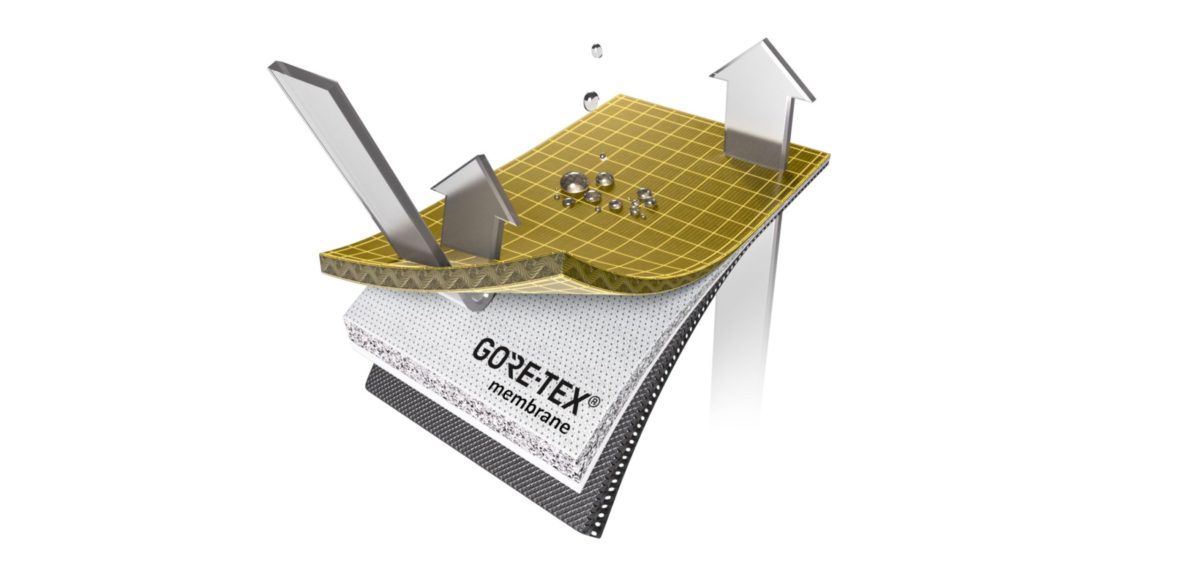
provided by: Gore Japan LLC
◆ Example of Gore-Tex outer shell
PeakPerformance | SHIELDER R&D JACKET & SHIELDER R&D JACKETPANTS
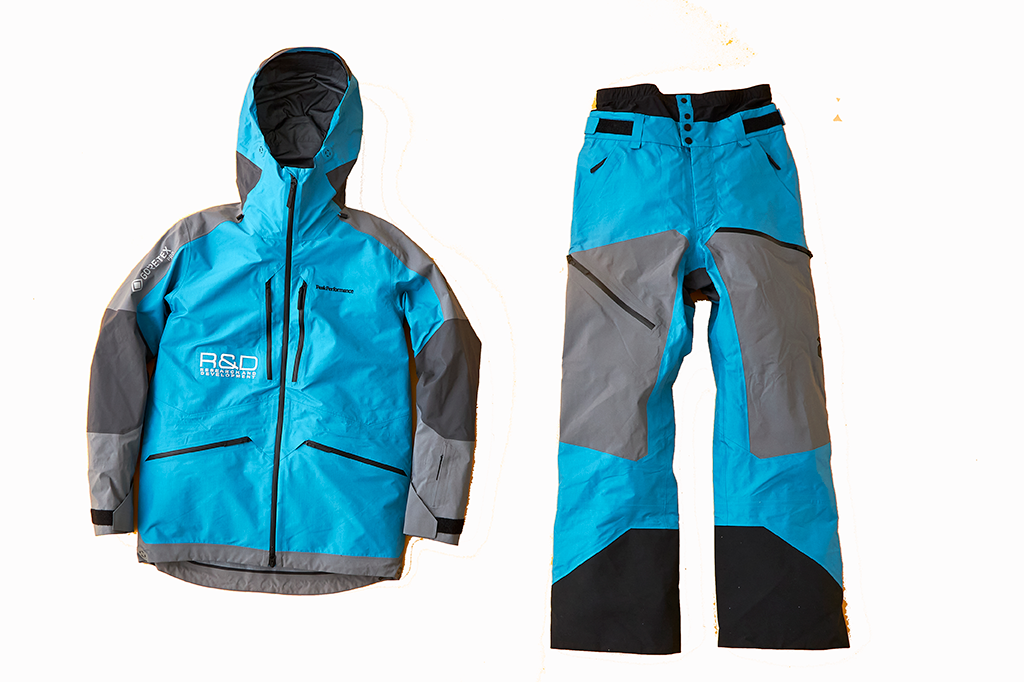
SHIELDER R&D JACKETPANTS 79,200 yen/S~L/2 colors
A high-spec model jointly developed with new athletes for the 2021 season. Uses Gore-Tex Pro, which has the highest moisture permeability.
Comfortable layering can only be found by yourself
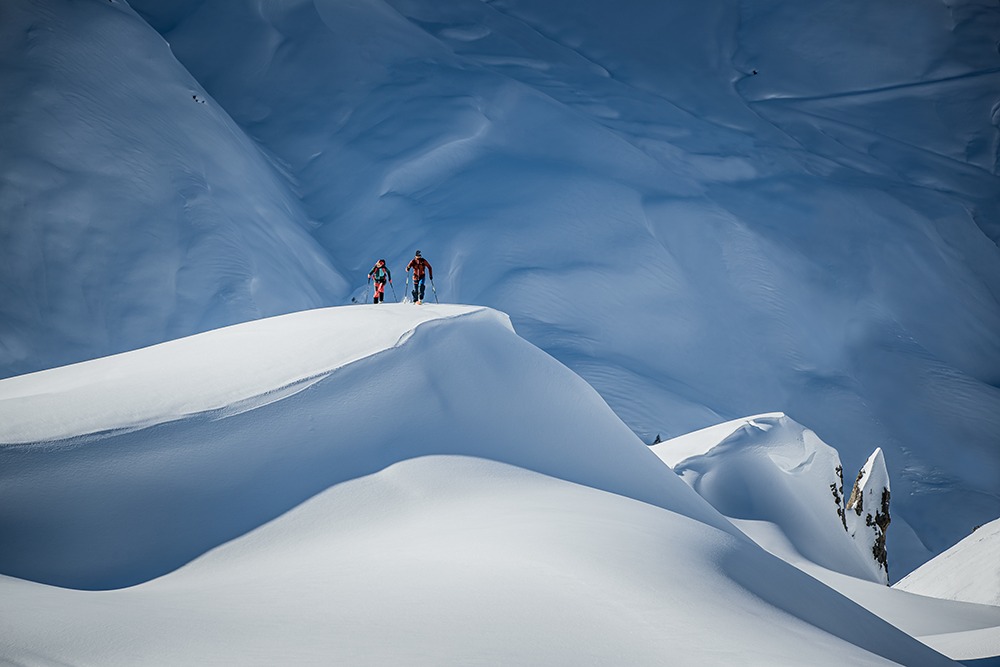
The temperature and calorific value that people feel varies from person to person. Some riders are sensitive to heat and prefer a base layer and outer shell even in the coldest of winters, while others are sensitive to cold and prefer to wear an insulation jacket even when hiking.
Layering is not something that anyone can say, "This is the time!" Each person has no choice but to find their own layering while trying it out on site.
The quickest way to find my layering is to get to know your body. Can you predict the situation by expanding your imagination, saying, "I'm going to sweat if I walk like this." What kind of wear is necessary for a temperature of -5°C at an altitude of 1,500m and a wind speed of 10m? Should I wear an outer shell before going through the forest zone and reaching the ridgeline? Should I wear a windshell?
If you can listen to your body and respond immediately, you can say that comfortable my layering is being built.
summary
Humans are creatures that have evolved and moved. By getting clothes = layering, it spread to every corner of the earth while responding to various environments from the equator to the North Pole.
Wear that incorporates new materials and functions will continue to appear, and layering will no doubt become smoother and more comfortable. The day may not be far off when technological innovation develops clothing that can be worn comfortably all year round, like the fur of wild animals. Until that day comes, layering will continue to be a way for humans to live in confrontation with nature.
Text by Shinya Moriyama

